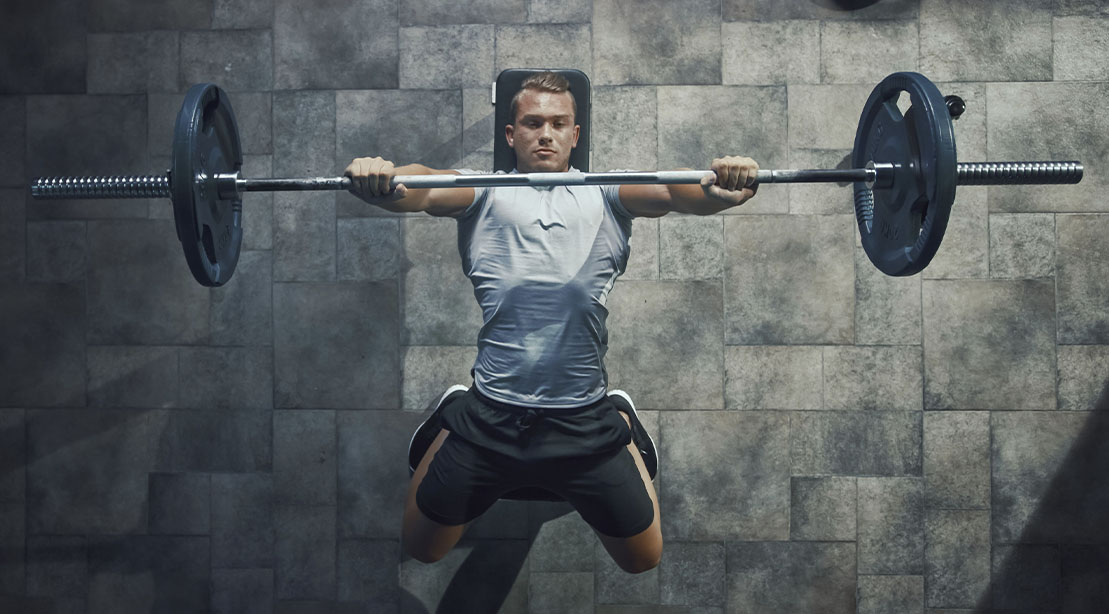Premeister: Maximize Performance through Priming

What is Post-Activation Potentiation (PAP)
Post-Activation Potentiation (PAP) is a physiological phenomenon where the force exerted by a muscle is temporarily enhanced following a previous contraction. Essentially, when you perform a heavy or intense movement, your nervous system is “activated” and primed for more explosive power. This heightened state can lead to increased muscle recruitment and faster, more forceful contractions in subsequent exercises.
How Priming Helps Build Muscles
By focusing on posterior chain stabilizers and mimicking the plane of motion or movement pattern of your main lift, priming helps to engage your muscles more effectively. Controlled activation drills wake up your muscles, while the explosive movements that follow recruit fast-twitch muscle fibers, leading to enhanced force production. The result? Your muscles are fired up, your nervous system is fully engaged, and you’re ready to tackle heavy lifts with greater power and efficiency.
Benefits of Priming
Enhanced Muscle Activation
Pre-activating specific muscle groups ensures that they are fully engaged during your main lifts, leading to better muscle recruitment and strength.
Increased Power Output
The combination of controlled activation and explosive movements helps to increase power output by tapping into PAP, allowing you to lift heavier and move more explosively.
Improved Movement Efficiency
By priming the muscles, you reinforce proper movement patterns, reducing the risk of injury and improving overall lift mechanics.
Greater Focus and Readiness
Priming prepares your mind and body for the upcoming workout, ensuring you’re fully focused and ready to perform at your best.
Injury Prevention
By gradually increasing the intensity and activating key stabilizing muscles, priming ensures that your body is ready to handle the demands of your main lifts with proper form, minimizing the risk of strains, sprains, and other injuries.
Priming Examples for Main Movements
Squat:
- Activation Drill: Slow Controlled Tempo Goblet Squat: (2-3 sets of 3-5 tempo reps: 4 seconds to lower, 2 seconds pause at end range, then explode up)
- Explosive Movement: Vertical Explosive Jump: (2-3 sets of 3-5 reps)
Bench Press:
- Activation Drill: Band Resisted Pull-Aparts (2-3 sets of 8-12 reps focused on end-range pause and contract)
- Explosive Movement: Bent-over Horizontal Med Ball Slams (2-3 sets of 3-5 reps)
Deadlift:
- Activation Drill: Slow Controlled Tempo Dumbbell RDLs (2-3 sets of 3-6 tempo reps: 4 seconds to lower, fast coming up)
- Explosive Movement: Kettlebell Swings or Broad Jumps (2-3 sets of 5-8 reps)
Overhead Barbell Press:
Pull-ups:
- Activation Drill: Light Controlled Tempo TRX Rows (2-3 sets of 4-8 Tempo reps: 4 seconds to lower, fast coming up)
- Explosive Movement: Vertical Med Ball Explosive Slams (2-3 sets of 3-5 reps)
Technique Tips for Priming
Focus on Control: During activation drills, emphasize slow, controlled movements to fully engage the target muscles.
Explode with Power: For the explosive movements, aim to generate maximum force with each rep, focusing on speed and explosiveness.
Maintain Proper Form: Even in priming exercises, form is crucial. Ensure you maintain good posture and alignment throughout each movement.
Programming Tips
To effectively incorporate priming into your routine, follow these guidelines:
- Perform 2-3 Sets: Keep the volume manageable to avoid fatigue before your main lifts.
- Activation Reps: Stick to 8-12 reps focused on lightly activating the stabilizers and not annihilating.
- Explosive Reps: Stick to 3-5 reps for explosive movements focusing on quality and explosive power.
- Rest: Allow for adequate rest between sets (30-60 seconds) to maintain intensity and effectiveness.
Conclusion
Priming is a powerful training strategy that can enhance your muscle activation, power output, and overall lifting performance. By incorporating priming into your routine, you can increase your strength, speed, and explosiveness, and take your training to the next level.
FAQs
Q: What is the main purpose of priming in strength training?
A: The main purpose of priming is to activate the muscles before a main lift, increasing the force output and overall power.
Q: What type of exercises are suitable for priming?
A: Controlled activation drills and explosive movements are ideal for priming. These exercises can include squats, deadlifts, bench press, and pull-ups.
Q: How many sets and reps should I do for priming exercises?
A: Aim for 2-3 sets of 8-12 reps for activation drills and 3-5 reps for explosive movements. Adjust the volume and intensity based on your individual needs and goals.

